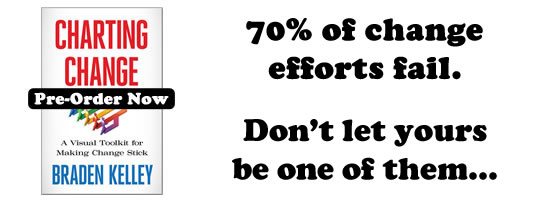The Tony Soprano Problem

Tony Soprano, the heavy-handed mafia boss from the famous TV show, was a master of coercion.  Through violence, extortion and bribery he rose to the top of his industry, leaving competitors in his wake.  Despite the high employee turnover in his organization, he achieved attractive margins.
Yet sensing that he could benefit by exploring alternative strategies, he often sought the advice of Dr. Jennifer Melfi, who encouraged him to take a more collaborative approach.  Tony thought about it for a minute and asked, “Then how do I get people to do what I want.”
Today, every manager has some version of the Tony Soprano problem.  We’re used to hierarchal organizations optimized for specific tasks.  Now we find that we’re competing in a networked world in which the old rules don’t apply.  Rather than traditional lines of authority, we need to start thinking in terms of ecosystems, platforms and movements.
The Rise Of Ecosystems
Historically, the purpose of an enterprise has been to manage resources effectively.  Ronald Coase, in The Nature of the Firm, argued that businesses achieved that goal by minimizing transaction costs, especially information costs.  His analysis implied that firms would grow until the increase in organization costs cancelled out this reduction of transaction costs.
Yet today, technology itself has greatly reduced those transaction and informational costs, nullifying many advantages to scale.  While a centralized network in a corporation (or in a mafia family) is a reasonably good way to create internal alignment, it tends to be woefully ineffective for integrating resources and information that reside externally.
That’s why rather than linear value chains, it’s becoming more effective to access resources through ecosystems.  Apple, for example, doesn’t need to predict what types of apps might be popular on its iPhone and hire people to produce them, its App Store has attracted an ecosystem of developers that does the job better than they ever could.
It is this shift from internal networks to global ecosystems that many managers find so frustrating, because our current organizations and management ethos are ill equipped to handle it.
A New Age Of Platforms
A generation ago, technology was expensive and it favored large-scale enterprises.  Only big organizations could afford expensive systems for accounting, operations and personnel.  So, following Coase’s line of thinking, technology drove down internal organizational costs more effectively than it reduced transaction costs in the greater market.
Yet these days technology is so cheap and widely distributed that there’s an ecosystem for just about everything.  Today, someone can wake up in the morning with an idea, design it with online CAD software, create a prototype on a 3D printer, solicit bids from manufacturers and then market and sell it online.
We access these ecosystems through platforms.  The iPhone is more than a mere product, it is a platform for accessing the work of thousands of developers through the App Store, just as eBay is more than a retailer, but a platform for buyers and sellers.  Google’s search engine is a product, but the bulk of the company’s profits come from AdWords, which is a platform.
Unlike traditional bilateral relationships, platforms are multi-sided and benefit from network effects. Â The more people who use them, the more valuable they become. Â That makes platforms fundamentally non-hierarchal. Â Nobody can effectively control an ecosystem through a platform because to do so would weaken its appeal.
That’s why the Tony Soprano problem is so pervasive and difficult.  As Moises NaÃm has put it, “power has become easier to get, but harder to use or keep.â€
The Emerging Power Of Movements
While ecosystems and platforms reduce the dominance of large enterprises, movements threaten their very existence.  With access to resources no longer proprietary and centralized, but open and distributed, small, loosely connected groups sharing a common purpose can synchronize their actions as effectively—and sometimes more so—than formal organizations.
Take the hacktivist group Anonymous.  It’s not an organization in any formal sense.  There are no executives, employees, shareholders or customers.  In reality, it’s no more than a network of online chat rooms.  Yet it’s been able to launch devastating attacks on powerful institutions such as the Church of Scientology, MasterCard and the nation of Tunisia.
Unlike enterprises, movements are kinetic and not tied to resources, but are driven by shared values.  For some firms, that can be an opportunity.  IBM, for example, has pledged to invest a billion dollars in Linux, an icon of the open source movement.  However, when an organization runs afoul of a movement’s values, it can become a target for destruction.
In a world defined not by ownership of assets, but access to resources, a threat or an opportunity can come from anywhere.  Today, the lunatics truly do run the asylum.
Why The Mission Now Must Drive Strategy
Ronald Coase wrote his famous paper in 1937 and, clearly, many things have changed since then.  These days, the purpose of an enterprise is not to merely manage resources efficiently, which platforms and ecosystems do exceptionally well, but to focus passion and purpose. That’s how you attract the talent, partners and customers you need to excel.
It is also why now it is the mission that must drive strategy.  Google’s stated mission of organizing the world’s information inspires exceptionally talented people to work for it. Walmart, a company that’s been targeted of labor movements, has prospered nonetheless because it fulfills its mission of providing the lowest price.
Consider the recent debacle at The New Republic, where new management eschewed the longstanding mission of bringing “sufficient enlightenment†to the problems of the nation and adopted a new mission of creating a “vertically integrated digital media company.† Its most talented journalists balked and then revolted, leaving the firm in dire straights.
And that’s the dilemma poor Tony—and the rest of us—face.  The role of leaders has changed. We can no longer command people to do what we want, but must inspire them to want what we want.
Image credit: fwweekly.com
Wait! Before you go…
Choose how you want the latest innovation content delivered to you:
- Daily — RSS Feed — Email — Twitter — Facebook — Linkedin Today
- Weekly — Email Newsletter — Free Magazine — Linkedin Group
 Greg Satell is a US based business consultant. You can find his blog at Digital Tonto and you can follow him on Twitter.
Greg Satell is a US based business consultant. You can find his blog at Digital Tonto and you can follow him on Twitter.
NEVER MISS ANOTHER NEWSLETTER!
LATEST BLOGS
Three things you didn’t know about credit cards
Photo by Ales Nesetril on Unsplash Many of us use credit cards regularly. From using them for everyday purchases to…
Read MoreFive CV skills of a business-minded individual
Photo by Scott Graham on Unsplash The skills listed on a CV help employers quickly understand your suitability for a…
Read More


